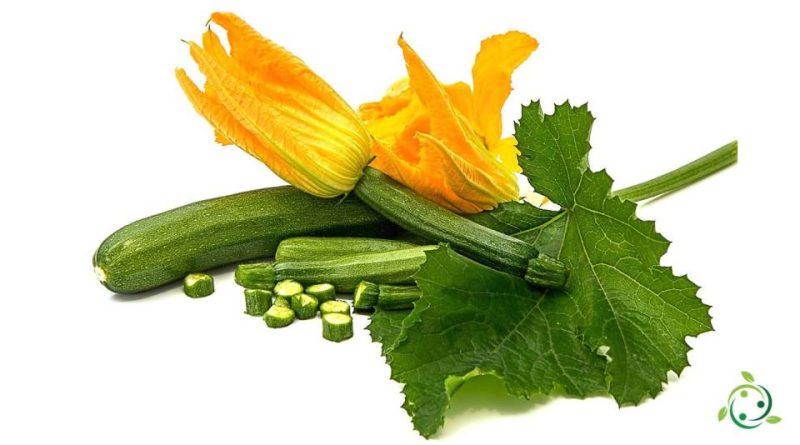Nutritional value of courgette
Nutritional value of courgette
The courgette (Cucurbita pepo L.) is a plant belonging to the Cucurbitaceae family whose fruits are used immature. It is an annual plant with a flexible, creeping or climbing, slender herbaceous stem, which was imported to Europe around 1500 after the discovery of America.
Features –
Courgette is one of the most used and cooked vegetables in the Mediterranean diet.
It has an elongated shape and a streaked or dotted dark green skin, or light green or yellow; the pulp is however always white.
There are several varieties of courgettes on the market, including: the “Striata d’Italia”, the “Verde di Milano”, the “Faentina”, the “Rigata Pugliese”, the “Veneziana” and the “Bianca Sarda”.
Furthermore, the courgette plant produces very well-known and appreciated flowers, the courgette flowers, excellent for the preparation of characteristic and tasty pancakes.
Nutritional factsheet –
Courgette, due to its water content and low energy intake, is considered a rehydrating, refreshing and diuretic vegetable.
Courgette are certainly recommended in low-calorie diets, very digestible and also suitable for the elderly, convalescents or those who practice strict diets.
Below is the average chemical composition and energy value of the Courgette (per 100 g of edible part), considering, however, that these values vary according to several variables: pedoclimatic conditions, production method, etc .; however, the average values that can be found are:
– Edible part 88%;
– Water 93.6 g;
– Protein 1.3 g;
– Lipids 0.1 gM
– Available carbohydrates 1,4 g;
– Dietary fiber 1.3 g;
– Energy 11 kcal;
– Sodium 2 mg;
– Potassium 343 mg;
– Iron 0.5 mg;
– Calcium 21 mg;
– Phosphorus 65 mg;
– Vitamin B1 0.08 mg;
– Vitamin B2 0.12 mg;
– Vitamin PP 0.7 mg;
– Vitamin A 6 RE mcg;
– Vitamin C 11 mg;
– Cholesterol 0 mcg.
Very popular are also the flowers, with a sweet taste, which are cooked in a batter of milk and flour. Unlike the green fruit, the flowers are rich in vit. A (252 mcg), with vit. C (28 mg), vit. B1 (0.09 mg), vit. B2 (0.16 mg), iron (2 mg) and contain only 0.5 g of sugars.
Property –
In addition to being consumed boiled and seasoned with oil and lemon, courgettes can be fried with milk and flour batter or breaded in breadcrumbs and egg. Baked, filled with wholemeal flours and cheese, they are appetizing vegetarian dishes; stewed on their own or with other vegetables, such as aubergines, potatoes, peppers, etc., they become a succulent mid-summer side dish.
The characteristics of the courgettes make it a vegetable with remarkable properties also of a therapeutic nature.
They are a mild diuretic and laxative adjuvant, and are useful in cases of minor intestinal and urinary disorders. Due to their refreshing action they are especially suitable in the summer season and in case of not serious inflammation of the digestive tract (gastritis, enteritis, colitis), of the vessels (haemorrhoiditis), of the urinary tract (cystitis), of the respiratory tree (tracheobronchitis). ). Their action is also good in constipation and in the tendency to insomnia.
Furthermore, since they provide just 11 kcal / 100 g, they are also suitable for those who follow a weight loss diet.

